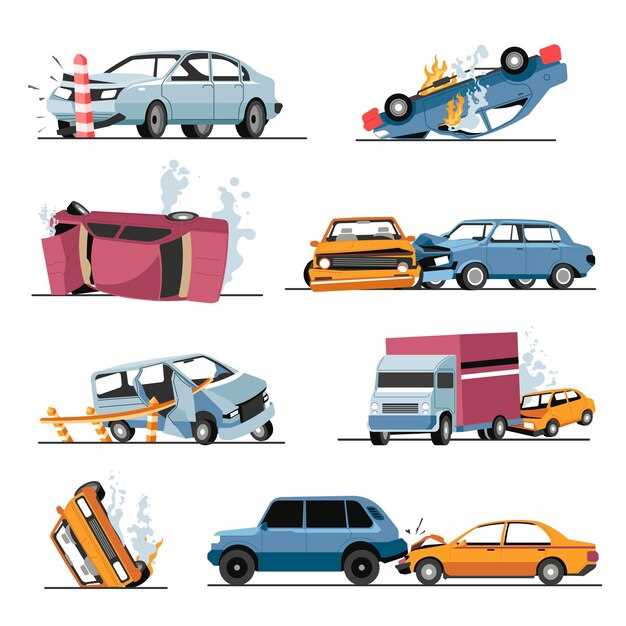
Common causes of blown fuses in vehicles
- Dominique Kaye
- 0
- Posted on

Understanding the common causes of blown fuses in vehicles is essential for any car owner. Fuses play a critical role in the car’s electronics, protecting various systems from excessive current that could cause damage. When a fuse blows, it often signifies an underlying issue that requires attention.
Several factors can lead to a blown fuse, ranging from simple wear and tear to more complex electrical malfunctions. One of the most frequent causes is a short circuit in the wiring or one of the vehicle’s components. This occurs when electricity flows along an unintended path, causing an overload that the fuse cannot handle.
Another common reason for a blown fuse involves the accessories connected to the car’s electronics. Items such as stereos, navigation systems, or additional lighting can draw more current than the fuse can support. Investing time to identify these sources ensures the longevity of your car’s electrical system and minimizes the risk of future issues.
Identifying Short Circuits and Their Impact on Car Electronics
Short circuits are one of the most common causes of blown fuses in vehicles. A short circuit occurs when there is an unintended path for electrical current to flow, bypassing the normal circuit. This can lead to excessive current that ultimately blows a fuse, disrupting the operation of various electronics within the vehicle.
Understanding how to identify short circuits can help in diagnosing electrical issues more effectively. The primary indicators of a short circuit include:
- Frequent Blown Fuses: If a specific fuse repeatedly blows, it may indicate a short circuit in that circuit.
- Burning Smell: The smell of burnt plastic or electrical components can be a sign of overheating caused by excessive current flow.
- Flickering or Inoperable Electronics: Malfunctioning electronics, such as lights or infotainment systems, can result from a short circuit disrupting power supply.
To investigate a potential short circuit, follow these steps:
- Visually inspect wiring for damage, frays, or corrosion.
- Check for loose connections that may allow wires to touch each other.
- Use a multimeter to test for continuity between wires and components.
- Identify the specific circuits affected by the blown fuse and trace them to find the source of the short.
Failing to address short circuits can have serious implications for car electronics. Not only do they lead to frequent blown fuses, but they can also damage sensitive electronic components, resulting in costly repairs. Additionally, failing electrical systems can compromise vehicle safety features, leading to dangerous situations on the road.
Regular maintenance and prompt diagnosis of electrical issues can help prevent the negative effects of short circuits and ensure the reliable operation of car electronics.
Understanding Overloaded Circuits in Automotive Systems

Overloaded circuits are a significant cause of blown fuses in vehicles, often leading to various electrical problems. In automotive systems, multiple electronic components draw power from the same circuit. When the total current demand exceeds the circuit’s designed capacity, it can result in a blown fuse.
Each car has a network of circuits dedicated to powering various electronics, such as headlights, infotainment systems, and power windows. These circuits are rated for a specific amperage, and when multiple devices operate simultaneously, the current draw may surpass this limit. For example, using high-intensity headlights alongside other electrical components can easily strain a circuit.
Moreover, damaged wiring or poor connections can exacerbate the situation, increasing resistance and, consequently, the current draw. This not only raises the likelihood of a blown fuse but can also damage connected electronics. Regular inspection of the vehicle’s electrical system is crucial to prevent overloads and ensure all components function properly within their designated limits.
Understanding how overloaded circuits affect automotive electronics helps vehicle owners recognize the symptoms and take necessary precautions. By being aware of the electrical demands of various components, drivers can prevent issues that lead to blown fuses, ensuring a smoother and safer driving experience.
Diagnosing Component Failures That Lead to Fuse Issues

Diagnosing component failures in a car’s electronics often begins with identifying the symptoms of a blown fuse. When a fuse blows, it usually indicates an underlying issue in the circuit it protects. This could stem from various problems, which should be addressed promptly to avoid further electrical damage.
Short Circuits are one of the most common causes of blown fuses. A short circuit occurs when a direct connection is made between the positive and negative wires, leading to excessive current flow. Inspect wiring harnesses for damage, fraying, or exposed wires that may be causing this issue. Regular checks on connectors and grounds can help uncover potential short circuits before they lead to fuse failures.
Overloaded Circuits can also cause fuses to blow. Each circuit in the car is designed to handle a specific current load. When too many devices draw power simultaneously, it can exceed that threshold, causing the fuse to trip. Review the components connected to the circuit, ensuring that the total load does not surpass the fuse’s rating. This often requires balancing the load among various circuits or upgrading fuses to support higher capacities safely.
The Age of Components plays a significant role in diagnosing fuse issues as well. Older electronics may suffer from degradation, leading to increased resistance and eventual failures. Investigate components such as motors, relays, and sensors for signs of wear or corrosion. Replacing aging parts can often resolve recurring fuse problems.
Finally, Faulty Components must be considered in the diagnosis process. Any electronic device, such as lights, wipers, or infotainment systems, can malfunction and cause a blown fuse. Utilizing a multimeter to test these components for proper function can pinpoint the exact source of the problem. Disconnecting components one by one while monitoring fuse integrity is another effective method to isolate the offending device.
In conclusion, a methodical approach to examining your car’s electronics will help diagnose component failures associated with blown fuses. By identifying issues like short circuits, overloads, aging components, and faulty devices, you can resolve fuse-related problems efficiently and prevent future occurrences.
